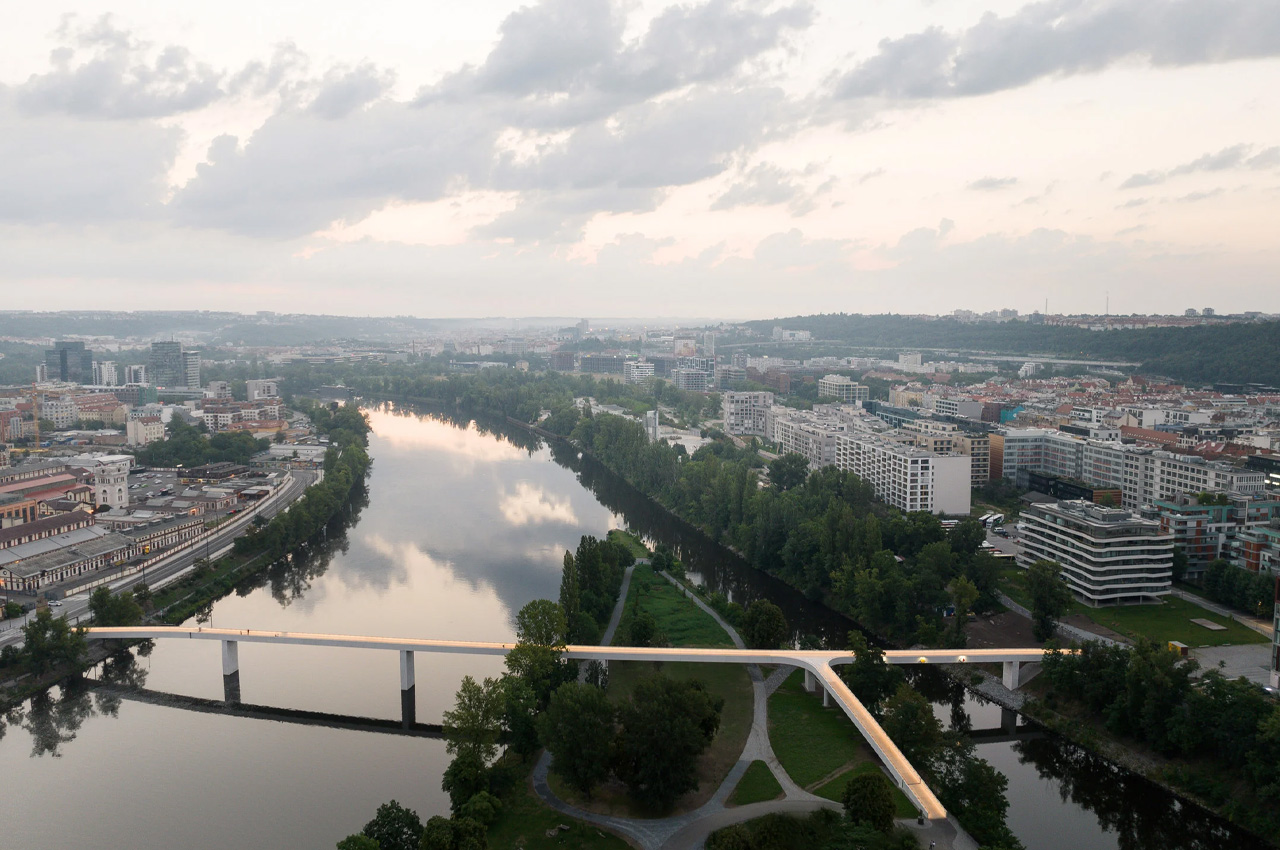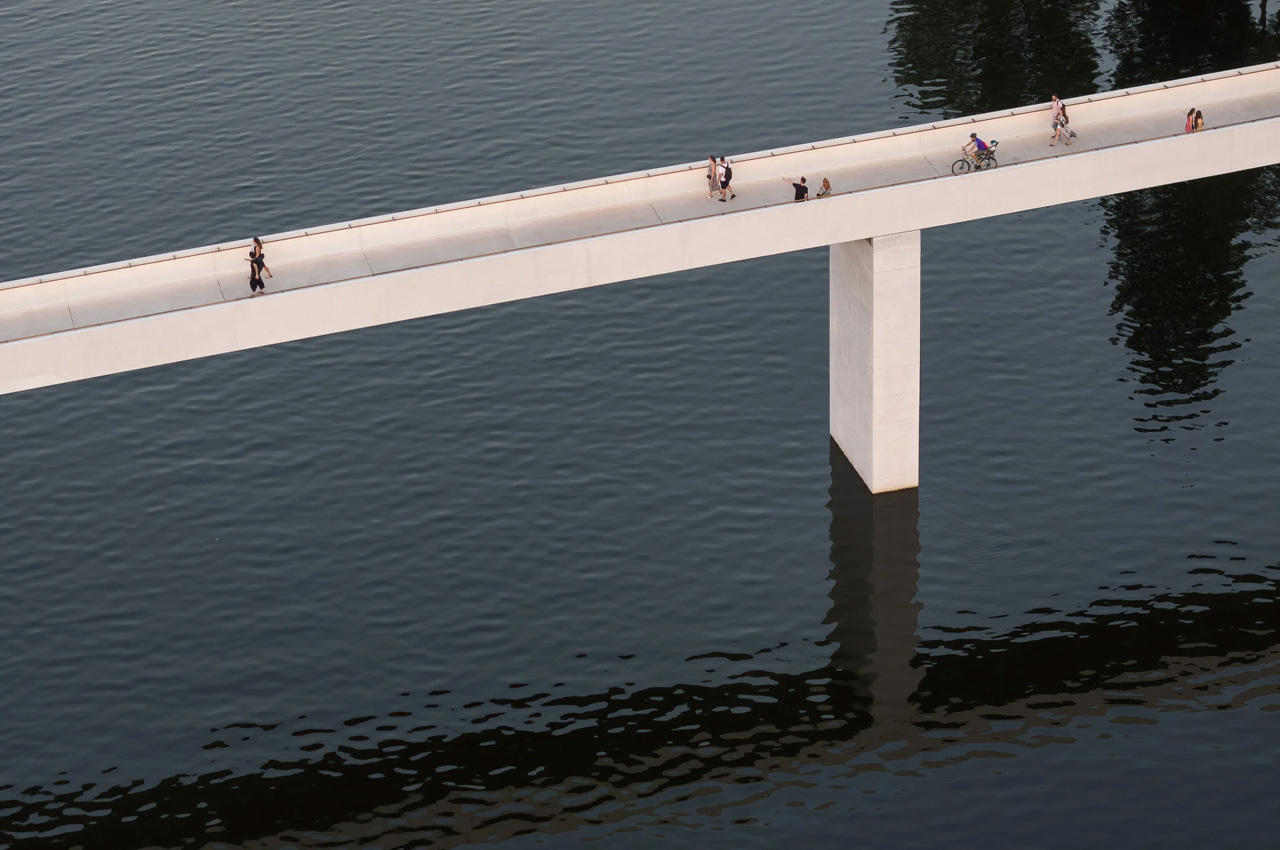- This topic is empty.
-
Topic
-
In a recent feat of architectural finesse, a strikingly minimalist and sculptural bridge has graced the picturesque landscape of Prague, traversing the majestic River Vltava. This architectural marvel is the brainchild of the creative minds of architects Petr Tej and Marek Blank, in a harmonious collaboration with the ingenious engineer Jan Mourek. Running a grandiose 300 meters, this bridge emerges as a testament to artistry and engineering, a true embodiment of form and function.

In respect to the aesthetic splendor of marble, the bridge unfurls as a grand canvas of sleek concrete, elegantly connecting the realms of Prague’s Holešovice and Karlín districts. A colloquial moniker has affectionately dubbed this expansive structure as “HolKa,” a bridge that not only joins two distinct urban facets but also extends its embrace to the island of Štvanice, a haven of greenery and recreational sanctuaries. As a gesture of thoughtful design, a gently curving ramp has been seamlessly integrated into the bridge’s architecture, providing easy access to Štvanice, where a lush park and sports facilities await.

Under the banner of Atelier Bridge Structures and Blank Architekti, Tej and Mourek have masterminded this architectural wonder. Tej elaborated on the significance of connecting Holešovice and Karlín, two contrasting domains within the city, highlighting the pivotal role played by Štvanice in making the urban wilderness and natural beauty readily accessible. Hence, the inclusion of the ramp, an elegant union of form and function.
The bridge’s visual poetry unfolds in its mesmerizing curved design, characterized by a continuous, slender beam of pristine white concrete, adorned with a subtle H-shaped profile. One cannot help but draw parallels between this architectural gem and the ethereal beauty of solid white marble sculptures. Supported by embankment abutments and piers, this engineering marvel incorporates a hydraulic system that stands guard, ready to lift the bridge should the river’s temper ever rise.
In preserving the aesthetic integrity of Prague’s iconic skyline, Tej remarked, “The silhouette of the bridge reacts to the Prague skyline in particular by the fact that its structure is not high, with no pylons and tie rods that would disturb views of the city.” This reverence for the city’s heritage is evident in the design’s deliberate nod to the prevailing low-lying bridges, ensuring minimal intrusion into the city’s panoramic vistas.

The bridge’s flanks are graced by fluted metal handrails, their journey culminating in bronze animal sculptures, a poignant homage to the locality’s rich history. An exquisite sculpture named “The River” by Jan Hendrych finds its place at the foot of the Štvanice ramp, adding another layer of artistic expression to this already extraordinary structure.

Tej poignantly reflects on the animal motifs that adorn the bridge, stating, “The animal motifs are actually a kind of monument to the animals that suffered on different sides of the bridge. There was a cavalry regiment on the Karlín side, hence the horses; hare hunts were held on Štvanice island, hence the hares, and the market area in Holešovice was originally used as a slaughterhouse, hence the bulls.” Thus, even in its artistic embellishments, this bridge emerges as a poignant storyteller, preserving the historical tapestry of Prague for generations to come. In the heart of the city, it stands not only as a bridge but as a magnificent sculpture, a minimalist masterpiece that leaves an indelible mark on Prague’s architectural heritage.
- You must be logged in to reply to this topic.



